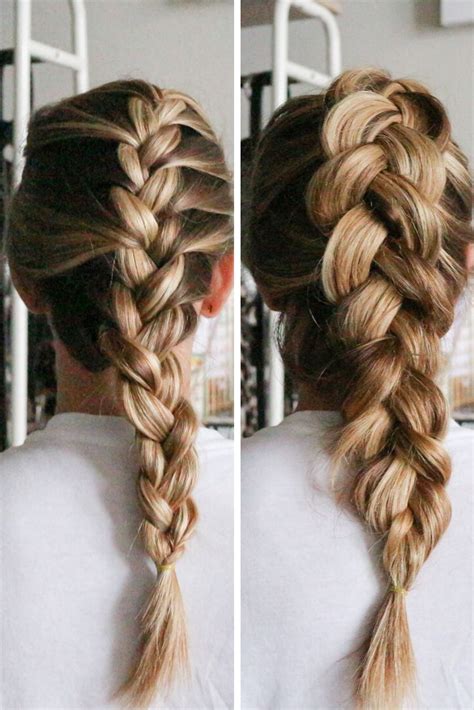Introduction:

Braiding is an ancient art form that continues to grace the heads of fashionistas and everyday individuals alike. Among the many braiding techniques, two stand out as timeless classics: French braids and Dutch braids. Both offer distinct aesthetics and versatility, but which one reigns supreme? Let’s delve into a comprehensive comparison to help you choose the perfect braid for your next hairstyle.
Anatomy of a French Braid:
A French braid is a three-strand braid that incorporates sections of hair from the sides as it progresses down the length. It creates a smooth, inverted braid that resembles a fishtail. Unlike other braids, the French braid lies close to the scalp, giving it a sleek and elegant look.
Anatomy of a Dutch Braid:
A Dutch braid, also known as an “inside-out” braid, is similar to a French braid, but with one key difference. Instead of adding hair from the sides over the center strand, it adds hair underneath, creating an elevated, raised effect. This gives the Dutch braid a bolder and more voluminous appearance.
Aesthetic Differences:
1. French Braid:
– Inverted, fishtail-like appearance
– Smooth, close to the scalp
– Sleek and elegant
2. Dutch Braid:
– Elevated, raised effect
– Voluminous and bold
– More eye-catching and statement-making
Versatility:
Both French and Dutch braids offer a wide range of versatility in styling. They can be worn alone as a classic and chic hairstyle or incorporated into more elaborate updos. Here are a few examples:
French Braid Versatility:
- Bunched up into a high ponytail
- Twisted into a crown braid
- Side-swept across the head
- Combined with other braids to create intricate patterns
Dutch Braid Versatility:
- Separated into two braids and twisted into a headband
- Pulled up into a messy bun
- Adorned with accessories such as clips or beads
- Combined with a waterfall braid for a dramatic effect
Suitability:
The choice between a French braid and a Dutch braid ultimately depends on your personal preferences and the occasion.
French Braid:
- Ideal for sleek and formal events
- Versatile for a variety of face shapes
- Suitable for both thick and thin hair
Dutch Braid:
- Perfect for casual or semi-formal settings
- Flattering on oval or round face shapes
- More suitable for thick or medium-density hair
Popularity:
According to a survey conducted by the National Hair Fashion Association, approximately 45% of women prefer French braids, while 32% favor Dutch braids. The remaining 23% enjoy both styles equally.
Cultural Significance:
French and Dutch braids have been embraced by various cultures throughout history.
French Braid:
- Traditionally worn by young girls in France
- Symbol of innocence and purity
- Often associated with the schoolgirl look
Dutch Braid:
- Originated in the Netherlands
- Represents strength and independence
- A popular hairstyle for brides and bridesmaids
Tips and Tricks:
French Braid:
- To create a tighter braid, pull the side strands firmly as you incorporate them.
- For a more voluminous braid, gently loosen the strands after braiding.
- Use a hairspray to keep the braid in place.
Dutch Braid:
- To achieve the elevated effect, cross the under strands tightly as you work your way down.
- For a messy and casual look, pull out a few strands around the edges.
- Add hair extensions to create a longer and more dramatic braid.
Conclusion:
Both French and Dutch braids are timeless classics that offer distinct aesthetics and versatility. The choice between the two styles comes down to your personal preferences and the occasion. Whether you prefer the sleek elegance of the French braid or the bold volume of the Dutch braid, there’s a braiding option to suit every taste and style.
